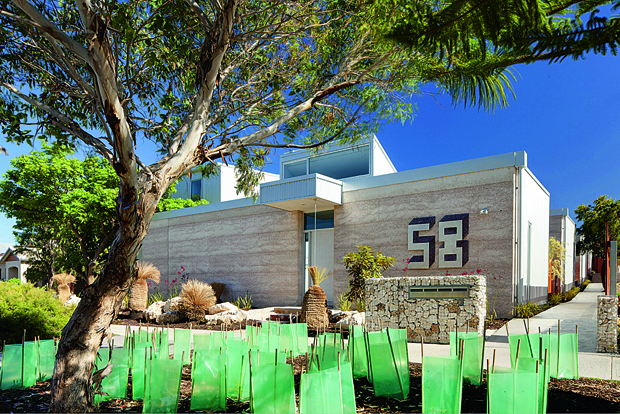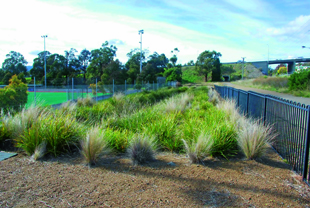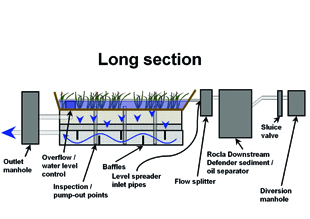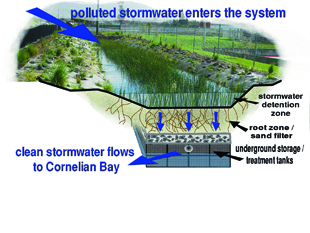Little has changed in the century since Dorothea Mackellar composed her ode to a sunburnt country, describing Australia as a land ‘of droughts and flooding rains’.
After a decade of significant drought, which saw the dams, lakes and wetlands of many Aussie towns dry out, the trucking in of water, and desalination plants all the rage, the pendulum swung completely in the opposite direction. The Bureau of Meteorology notes that between April 2010 and March 2012 Australia experienced its wettest two year period on record, with both the Murray–Darling Basin and Western Australia pencilling in their wettest years in recorded history around that period.
Now the poor old BOM are finding the weather ever tricky to predict. In Spring 2012 they began by suggesting that there was up to a 75 per cent chance that southeast Australia would experience below normal rainfall. Before summer arrived that forecast was revised back to average rainfall, after what the chief climate forecaster described as the biggest turnaround in weather patterns since records began.
Who knows which way the country’s barometer’s dial will have swung by the time we go to press. The bigger question is, have we yet learnt how to manage this precious life giving resource—water?
Maybe. Maybe not. Take the rainwater tank as a short case study.
 Not so many years ago urban municipalities didn’t allow townies to install tanks to harvest their rainwater, even with Australian households slurping up 14 per cent of our total water consumption. However during the last drought councils about-faced and encouraged households to bung a tank in their backyard, or down the side of the house.
Not so many years ago urban municipalities didn’t allow townies to install tanks to harvest their rainwater, even with Australian households slurping up 14 per cent of our total water consumption. However during the last drought councils about-faced and encouraged households to bung a tank in their backyard, or down the side of the house.
By 2007 more than 20 per cent of our homes sported a rainwater tank. Not surprisingly South Australia, at the bottom end of the everdiminishing flow of the Murray Darling river system was the most prolific, with rates of 40 per cent tank installations in Adelaide and three quarters of the remainder of the state having one.
And the roll out has continued without any noticeable slackening, helped along by government rebates on the purchase of tanks, and plumbing in of laundries and toilets to rainwater supplies. The most recent figures the Australian Bureau of Statistics have on rainwater tank installations focus attention on Victoria showing as of October 2011 that a little shy of three quarters of a million Victorian households were collecting rain. In country Victoria this amounted to 48 per cent of households with a tank and 27 per cent of Melbournians.
One could be forgiven for thinking that all was hunky dory in the world of water conservation. It ain’t necessarily so.
 58 Stevens Street by Officer Woods Architects was one of many of the projects entered in this year’s BPN Sustainability Awards (Multi-Density Residential winner) which addresses water conservation. Rainwater is harvested from all roofs and collected in four 3000l tanks which are plumbed to all WCs and washing machines for reuse. Each house is double plumbed for grey water recycling. All fittings are 4 star or greater WELS rated water efficient. Waterwise gardens have been planted with extensive endemic coastal native species.
58 Stevens Street by Officer Woods Architects was one of many of the projects entered in this year’s BPN Sustainability Awards (Multi-Density Residential winner) which addresses water conservation. Rainwater is harvested from all roofs and collected in four 3000l tanks which are plumbed to all WCs and washing machines for reuse. Each house is double plumbed for grey water recycling. All fittings are 4 star or greater WELS rated water efficient. Waterwise gardens have been planted with extensive endemic coastal native species.
Much of the incentive for householders to invest in rainwater tanks has dried up, so to speak. The Federal Rainwater and Greywater Initiative concluded in May 2011, with 14,625 rebates worth more than $7 million having been processed. The ACT Rainwater tank rebate concluded in June of this year. As did NSW’s, through which 52,806 households received assistance to install a rainwater tank (76,638 households also took up the water efficient washing machine rebate, whilst 21,440 installed a dual flush toilet.)
And although Queensland concluded its rebate program some years ago, that state’s Water Commission has mandated that any domestic dwelling on town water in South Eastern Queensland had to achieve water savings of 70kL per year via an ‘alternative water substitution measure,’ such as rainwater tanks. All new commercial buildings have a similar development code that they need to comply with.
These mandates are currently under review and the Rainwater Harvesting Association of Australia (RHAA) and the Water Tank Group are incensed that the Master Builders and the Housing Industry Association (HIA) have recommended the State government eliminate a water saving mandate, as a possible means of reducing costs in a depressed new residential construction market.
The RHAA argues that monitoring shows that rainwater plumbed households are saving 90kL per annum. This well exceeds the QWC’s requirements of 70kL p.a. and saves SE Queensland 21.2 Gigalitres. Does a possible economic stimulus trump increasing residential water security? A tough call.
Not that rainwater tanks are the only game in town, when it comes to intelligent water management
 Hobart City Council’s Water Sensitive Urban Design.
Hobart City Council’s Water Sensitive Urban Design.
For rain doesn’t just fall on roofs, where it can be directed into storage tanks. It also lands on roads, footpaths, car parks, driveways, and yards. Managing this stormwater presents many challenges to which Water Sensitive Urban Design seeks to rise, by working with the complete flow of water. WSUD looks to manage the urban water cycle, addressing not just drinking and storm water, but also water recycling, waterway health and sewage. Check out Hobart City Council’s excellent Water Sensitive Urban Design Resource Kit, with its development guidelines and set of 12 practice notes. All of which are available online for free. Go to www.hobartcity.com.au and follow the link to Environment and thence Stormwater & Waterways.
Raingardens are WSUD’s current poster children. In simple terms they’re vegetated sponges, thick with mulch and commonly populated by native plants with a proven ability to survive both drought and deluge. Rainwater falling on paved areas is directed towards such raingardens, so they can detain nutrients, sediment and heavy metals that might otherwise wash into waterways with stormwater.
The national CRC (co-operative research centre) for Water Sensitive Cities was launched in September 2012, with the not-so modest task of guiding $100 billion in water investments in the next 15 years. To contribute its input to this investment, the CRC itself is proposed to have a budget of $100 million over the next nine years.
 In 2002 Victoria’s Water Industry and the state’s Department of Sustainability and Environment got together to establish their own Smart Water Fund. One of its many funded initiatives is Aquadux, a program that for the past three years has incorporated sustainable water use principles into current plumbing apprenticeship training. It has been offered to students attending Australian Technical College Sunshine in Victoria. The project uses ‘real life sustainability solutions’ designed to engage students, teachers and industry partners. The Smart Water Fund recently announced it had opened for its 10th round of projects submissions to share in a pool $1 million worth of funding.
In 2002 Victoria’s Water Industry and the state’s Department of Sustainability and Environment got together to establish their own Smart Water Fund. One of its many funded initiatives is Aquadux, a program that for the past three years has incorporated sustainable water use principles into current plumbing apprenticeship training. It has been offered to students attending Australian Technical College Sunshine in Victoria. The project uses ‘real life sustainability solutions’ designed to engage students, teachers and industry partners. The Smart Water Fund recently announced it had opened for its 10th round of projects submissions to share in a pool $1 million worth of funding.
For those plumbers well beyond their apprenticeship days, Master Plumbers and Mechanical Services Association of Australia (MPMSAA) set up Green Plumbers in 2000 to provide training in measures that would reduce consumer’s costs in water and energy use. So effective was the program that the training side of things was sold off in 2008, as a commercial venture. Green Plumbers has since spread its wings with training courses and accreditation in USA, Canada, India, China, and New Zealand. Over 9,000 plumbers representing almost half as many plumbing businesses have completed Green Plumbers courses in Australia.
This cadre of eco plumbers will need their newly acquired skills to evaluate an ever burgeoning array of water management products. Some are old favourites like the Smartflo integrated leaf-guard and guttering, which has a new Australian manufacturer. Or more recent market entries, such as Azuratec’s award winning SlabTanks that allow for rainwater to be stored within the house slab. Protected from heat and light, the chance of algal growths occurring is also apparently greatly reduced. And as their name clearly implies, Rain Harvesting Pty Ltd offer a vast catalogue of fixtures for the collection of rainwater, including downpipe fittings that combine the benefits of both a leaf beater style inlet and a first flush system.
 Smart WaterMark finalists for the 2012 Product of the Year Awards were announced in August, with the winners getting the nod during National Water Week 21-27 October. Already more than 260 products and services have been certified to use the Smart WaterMark label for their water saving properties.
Smart WaterMark finalists for the 2012 Product of the Year Awards were announced in August, with the winners getting the nod during National Water Week 21-27 October. Already more than 260 products and services have been certified to use the Smart WaterMark label for their water saving properties.
Smart WaterMark also have a public awareness program called Every Bucket Counts, through which they inform that water conservation not only saves valuable water, but also reduces electricity use and greenhouse gas emissions. For every four buckets of water saved, so is 50 grams of carbon dioxide equivalent.
With a few recent years of wet weather, water conservation might not have been the hot topic it once was, but as precursor of life it can never completely slide off the agenda.

